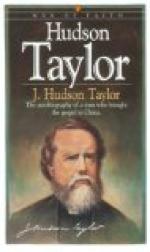The next morning we rowed across the lake and took the Bartlett trail, ascending Haystack, some five thousand feet high, just to get an appetite for dinner; our guide encouraging us on the way by saying that there never had been more than twenty people before “on that air peak.” In fact, there was no trail, and in some places it was so steep that we were compelled to go up on all fours; or as Scott puts it more elegantly in the “Lady of the Lake”:
“The
foot was fain
Assistance from the hand to gain.”
The view from the summit well repaid the toil. We saw Slide Mountain, near by to the north, and Whiteface far beyond, perhaps twenty-five miles distant; northeast, the Gothics; east, Saw-teeth, Mt. Colvin, Mt. Dix, and the lakes of the Ausable. To the southeast, Skylight; northwest, Tahawas, still foolishly styled on some of our maps, Mt. Marcy. The descent of Haystack was as easy as Virgil’s famous “Descensus Averni.” We went down in just twenty minutes. The one that reached the bottom first simply possessed better adaptation for rolling.
* * *
Eagles still claim the loftiest heights:
from there
They scan with solemn eyes
the scenes below—
The river and the hills which shall endure
While man’s frail generations
come and go.
E. A. Lente.
* * *
One mile from the foot of Haystack brought us to Panther Gorge Camp, appropriately named, one of the wildest spots in the Adirondacks. We remained there that night and slept soundly, although a dozen of us were packed so closely in one small camp that no individual could turn over without disarranging the whole mass. Caliban and Trinculo were not more neighborly, and Sebastian, even sober, would have been fully justified in taking us for “a rare monster” with twenty legs.
The next morning we ascended Tahawas, but saw nothing save whirling clouds on its summit. Twice since then we have had better fortune, and looked down from this mountain peak, five thousand three hundred and forty-four feet above the sea, upon the loveliest mountain landscape that the sun ever shone upon. We went down the western slope of Tahawas, through a driving rain, to Camp Colden, where, with clothes hung up to dry, we looked like a party of New Zealanders preparing dinner, hungry enough, too, to make an orthodox meal of each other. The next day the weather cleared up, and we made a trip of two miles over a rough mountain trail to Lake Avalanche, whose rocky and precipitous walls form a fit christening bowl, or baptistery-font for the infant Hudson.
Returning to Camp Colden and resuming our western march, two miles brought us to Calamity Pond, where a lone monument marks the spot of David Henderson’s death, by the accidental discharge of a pistol. Five miles from this point brought us to the “Deserted Village,” or the Upper Adirondack Iron Works, with houses and furnaces abandoned, and rapidly falling into decay. Here we found a cheery fireside and cordial welcome.




